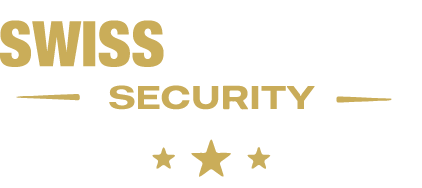How to Build an Image Recognition App with AI and Machine Learning
The dataset provides all the information necessary for the AI behind image recognition to understand the data it “sees” in images. Everything from barcode scanners to facial recognition on smartphone cameras relies on image recognition. But it goes far deeper than this, AI is transforming the technology into something so powerful we are only just beginning to comprehend how far it can take us.
These considerations help ensure you find an AI solution that enables you to quickly and efficiently categorize images. One of the most important responsibilities in the security business is played by this new technology. Drones, surveillance cameras, biometric identification, and other security equipment have all been powered by AI. In day-to-day life, Google Lens is a great example of using AI for visual search.
image recognition
The image we pass to the model (in this case, aeroplane.jpg) is stored in a variable called imgp. You were able to recognize the image right away as an airplane, right? So, retail companies create planograms – a part of the ideal store strategy. Retailers can digitize store checks for issues, understand the shelf conditions and how the sales get affected.
ResNeXt [42] is said to be the current state-of-the-art technique for object recognition. R-CNN architecture [43] is said to be the most powerful of all the deep learning architectures that have been applied to the object detection problem. YOLO [44] is another state-of-the-art real-time system built on deep learning for solving image detection problems. The squeezeNet [45] architecture is another powerful architecture and is extremely useful in low bandwidth scenarios like mobile platforms. SegNet [46] is a deep learning architecture applied to solve image segmentation problem.
Big Data: What it Is and Why it Is Important for Your Business
A single photo allows searching without typing, which seems to be an increasingly growing trend. Detecting text is yet another side to this beautiful technology, as it opens up quite a few opportunities (thanks to expertly handled NLP services) for those who look into the future. Artificial intelligence image recognition is the definitive part of computer vision (a broader term that includes the processes of collecting, processing, and analyzing the data). Computer vision services are crucial for teaching the machines to look at the world as humans do, and helping them reach the level of generalization and precision that we possess. Many of the current applications of automated image organization (including Google Photos and Facebook), also employ facial recognition, which is a specific task within the image recognition domain. The MobileNet architectures were developed by Google with the explicit purpose of identifying neural networks suitable for mobile devices such as smartphones or tablets.
That’s because the task of image recognition is actually not as simple as it seems. It consists of several different tasks (like classification, labeling, prediction, and pattern recognition) that human brains are able to perform in an instant. For this reason, neural networks work so well for AI image identification as they use a bunch of algorithms closely tied together, and the prediction made by one is the basis for the work of the other.
For much of the last decade, new state-of-the-art results were accompanied by a new network architecture with its own clever name. In certain cases, it’s clear that some level of intuitive deduction can lead a person to a neural network architecture that accomplishes a specific goal. The Inception architecture, also referred to as GoogLeNet, was developed to solve some of the performance problems with VGG networks. Though accurate, VGG networks are very large and require huge amounts of compute and memory due to their many densely connected layers. Two years after AlexNet, researchers from the Visual Geometry Group (VGG) at Oxford University developed a new neural network architecture dubbed VGGNet. VGGNet has more convolution blocks than AlexNet, making it “deeper”, and it comes in 16 and 19 layer varieties, referred to as VGG16 and VGG19, respectively.
However, if you have a lesser requirement you can pay the minimum amount and get credit for the remaining amount for a period of two months. The softmax layer can be described as a probability vector of possible outcomes. A third convolutional layer with 128 kernels of size 4×4, dropout with a probability of 0.5. A second convolutional layer with 64 kernels of size 5×5 and ReLU activation. A convolutional layer with 64 kernels of size 5×5 and ReLU activation. The tags can be used for lots of useful purposes in Shopify with the biggest benefit being a boost to your search results.
Get Instant Data Annotation Quote
After the training is completed, we evaluate the model on the test set. This is the first time the model ever sees the test set, so the images in the test set are completely new to the model. But it would take a lot more calculations for each parameter update step. At the other extreme, we could set the batch size to 1 and perform a parameter update after every single image. This would result in more frequent updates, but the updates would be a lot more erratic and would quite often not be headed in the right direction. The process of categorizing input images, comparing the predicted results to the true results, calculating the loss and adjusting the parameter values is repeated many times.
- Let us start with a simple example and discretize a plus sign image into 7 by 7 pixels.
- A deep learning model specifically trained on datasets of people’s faces is able to extract significant facial features and build facial maps at lightning speed.
- The universality of human vision is still a dream for computer vision enthusiasts, one that may never be achieved.
- Engineers need fewer testing iterations to converge to an optimum solution, and prototyping can be dramatically reduced.
If you look at results, you can see that the training accuracy is not steadily increasing, but instead fluctuating between 0.23 and 0.44. It seems to be the case that we have reached this model’s limit and seeing more training data would not help. In fact, instead of training for 1000 iterations, we would have gotten a similar accuracy after significantly fewer iterations. Only then, when the model’s parameters can’t be changed anymore, we use the test set as input to our model and measure the model’s performance on the test set. In this section, we are going to look at two simple approaches to building an image recognition model that labels an image provided as input to the machine.
Optical character recognition (OCR) identifies printed characters or handwritten texts in images and later converts them and stores them in a text file. OCR is commonly used to scan cheques, number plates, or transcribe handwritten text to name a few. Many companies find it challenging to ensure that product packaging (and the products themselves) leave production lines unaffected. Another benchmark also occurred around the same time—the invention of the first digital photo scanner.
Discover how to automate your data labeling to increase the productivity of your labeling teams! Dive into model-in-the-loop, active learning, and implement automation strategies in your own projects. In the 1960s, the field of artificial intelligence became a fully-fledged academic discipline. For some, both researchers and believers outside the academic field, AI was surrounded by unbridled optimism about what the future would bring. Some researchers were convinced that in less than 25 years, a computer would be built that would surpass humans in intelligence. Find out how the manufacturing sector is using AI to improve efficiency in its processes.
Are you up to speed with learning in an ever-changing world?
Our biological neural networks are pretty good at interpreting visual information even if the image we’re processing doesn’t look exactly how we expect it to. Computer vision is a set of techniques that enable computers to identify important information from images, videos, or other visual inputs and take automated actions based on it. In other words, it’s a process of training computers to “see” and then “act.” Image recognition is a subcategory of computer vision. The model you develop is only as good as the training data you feed it. Feed quality, accurate and well-labeled data, and you get yourself a high-performing AI model. Reach out to Shaip to get your hands on a customized and quality dataset for all project needs.
Application of artificial intelligence in endoscopic image analysis for … – Nature.com
Application of artificial intelligence in endoscopic image analysis for ….
Posted: Thu, 17 Aug 2023 07:00:00 GMT [source]
In addition, for classification, the used FCRN was combined with the very deep residual networks. This guarantees the acquirement of discriminative and rich features for precise skin lesion detection using the classification network without using the whole dermoscopy images. Unlike humans, machines see images as raster (a combination of pixels) or vector (polygon) images. This means that machines analyze the visual content differently from humans, and so they need us to tell them exactly what is going on in the image. Convolutional neural networks (CNNs) are a good choice for such image recognition tasks since they are able to explicitly explain to the machines what they ought to see.
- As a result, we can open the Leaderboard fragment from any other fragments of our app.
- A computer vision model is generally a combination of techniques like image recognition, deep learning, pattern recognition, semantic segmentation, and more.
- The next step will be to provide Python and the image recognition application with a free downloadable and already labeled dataset, in order to start classifying the various elements.
- It works by comparing the central pixel value with its neighboring pixels and encoding the result as a binary pattern.
Read more about https://www.metadialog.com/ here.


